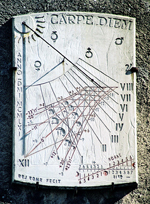Interpreting the Book of Proverbs (Part 7)

This blog entry continues to develop our third guideline for interpreting Proverbs. With part six, we looked at the first five of ten forms found in this book. With this post, we will complete the third principle: identifying precise literary forms.
F. Better-Than Saying
This form is a variation of comparative sayings. This saying is designed to set forth priorities and values. Some have concluded that this type of proverb is a form of relativism advocated by the sages of Israel. Against this, it is more precise to view this as eliminating one element and affirming another (Hildebrandt, “Proverbs,” p. 242). ???Better is a poor man who walks in his integrity than a rich man who is crooked in his ways??? (Prov 28:6). To be rich and crooked is not a lifestyle to be valued, but there is value in being poor with integrity.
G. Numerical Saying
This type of saying is another subcategory of the saying. It is the dominant form used in Proverbs 30. The numerical saying will begin with a number line in the X/X + 1 pattern, where the second number is one digit larger than the previous number. The number line will also state the element that binds the list together. The number line is then followed by a list of items. The number of items in the list will correspond to the highest number in the number line. An example of this is Proverbs 6:16???19,
There are six things that the LORD hates,
seven that are an abomination to Him:
haughty eyes,
a lying tongue,
and hands that shed innocent blood,
a heart that devises wicked plans,
feet that make haste to run to evil,
a false witness who breathes out lies,
and one who sows discord among brothers.
As stated in the number line, Solomon lists seven things that God hates. In interpreting the numerical sayings, the final element listed is usually the author???s main point (Hildebrandt, ???Proverbs,??? pp. 241???42). In Proverbs 6:16???19, the zenith of abominable items to God is ???one who sows discord among brothers.???
H. Example Story
An example story recounts an illustration or personal experience and how from experience he has learned a truth worth leaving to others. This form has three basic parts: an opening where the sage notes his experience, a story illustrating his point, and the moral conclusion. Proverbs 24:30???34 is an example of this (also see 7:6???23). The opening is in v. 30, the example story in vv. 31???32, and the moral conclusion in vv. 33???34 (Klein, Blomberg, and Hubbard, Introduction to Biblical Interpretation, p. 317).
I. Beautitudes
A beautitude is a pronouncement of blessing on someone by an authority figure. When this is used in wisdom literature, it provides a motivation to convince someone that blessing comes by following the advised course of action (see 3:13???14; 8:32, 34; 16:20; 20:7; 28:14; 29:18). Proverbs 20:7 reads like this: ???The righteous who walks in his integrity???blessed are his children after him!??? Because a man has a life of integrity, his children will be the beneficiaries from his integrity.
J. Acrostic Poem
An acrostic poem uses the Hebrew alphabet as a device for structuring. An acrostic poem is used in Proverbs 31:10???31 to describe the virtuous women. The acrostic poem connotes completeness by emphasizing that this woman???s qualities go from A through Z, from beginning to end, she is a most excellent woman. The point is that her virtuous character has been thoroughly presented.
With this post and the previous one, we have looked at the third principle for interpreting the book of Proverbs: identifying precise literary forms. In our next two posts, I will continue my series of posts by examining the fourth principle for understanding Proverbs.
Technorati Tags:
Proverbs, Wisdom literature


